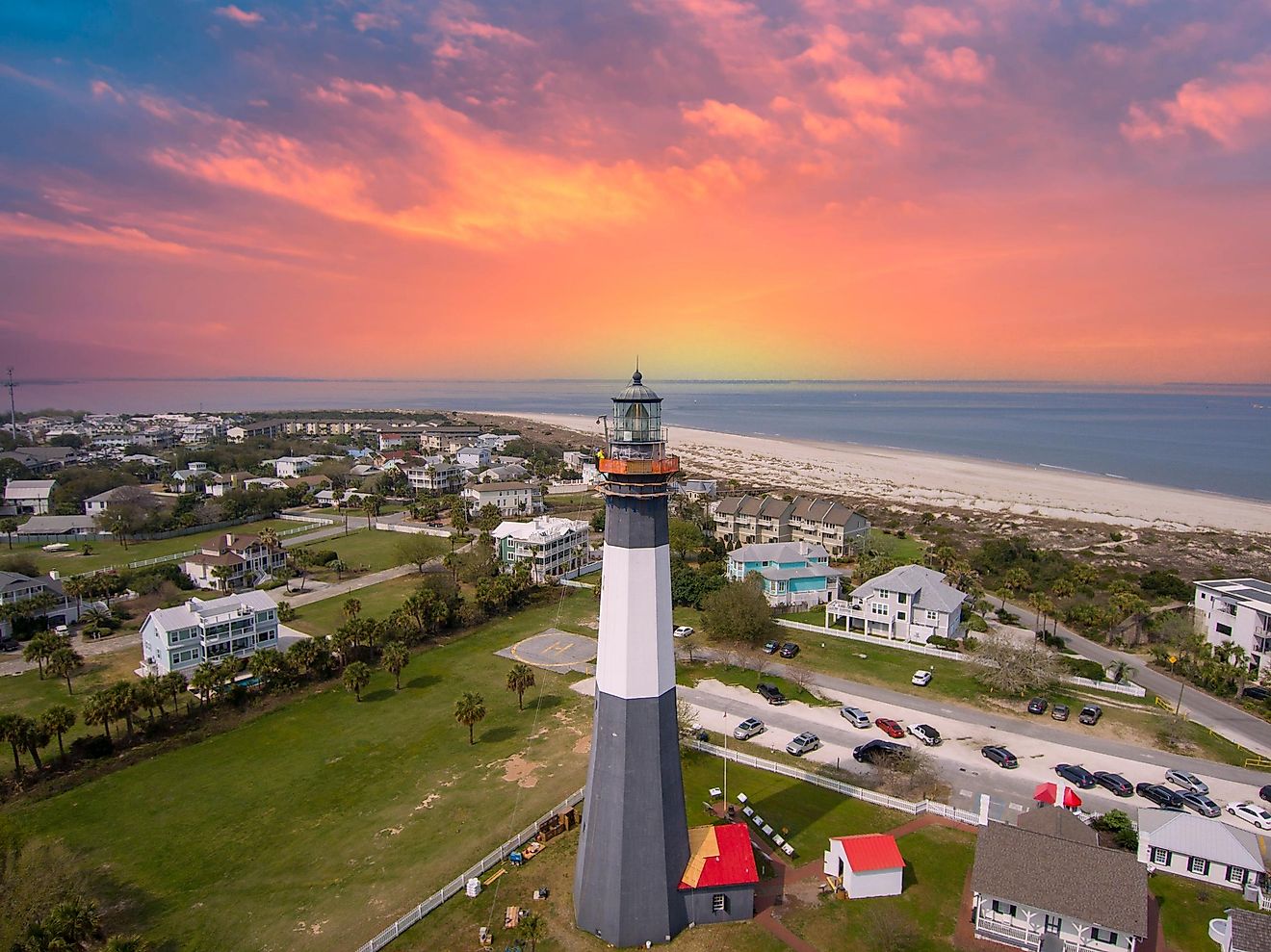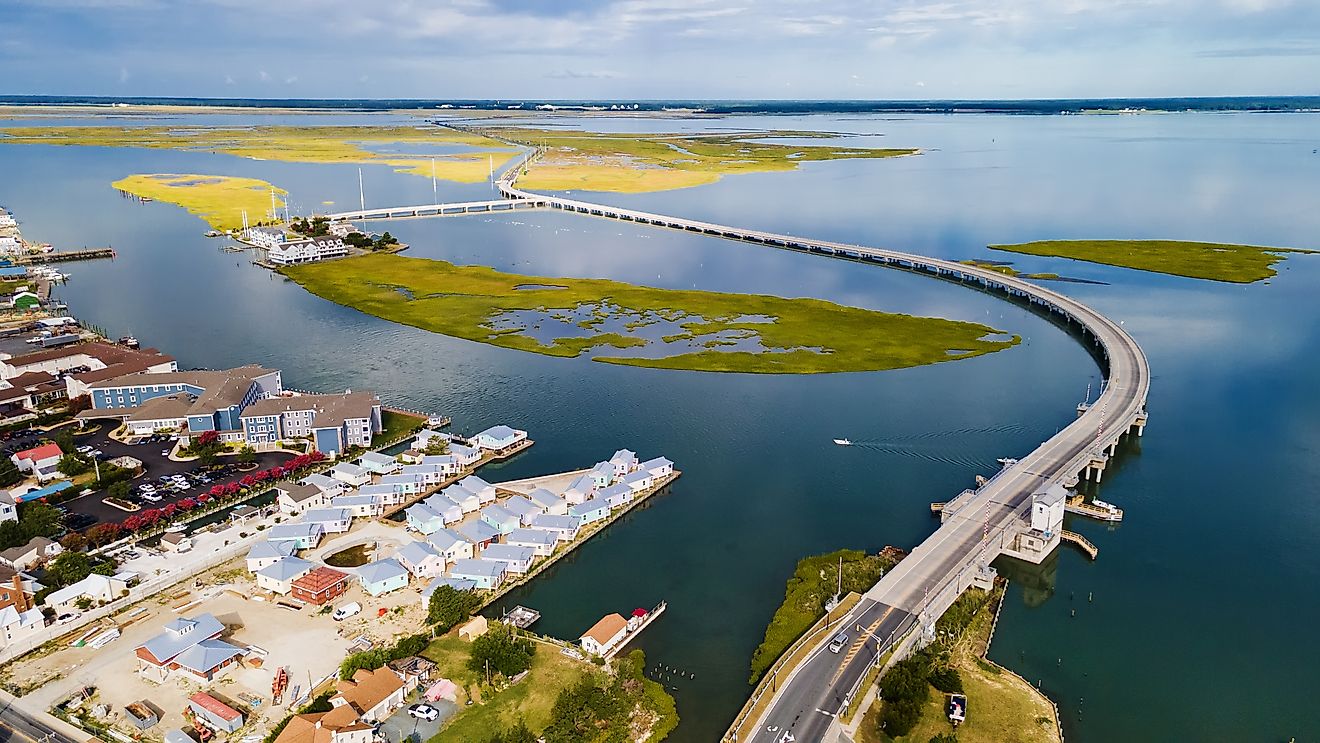
Saco, Maine
From sandy beaches to thick woodlands - Saco, Maine, is known as a city that is "friendly by nature." Visitors and locals can view the remnants of its industrial past on Factory Island, which is now home to dining, bars, and breweries. Saco is still in its prime regarding industrialization as it is home to the General Dynamics Weapons Systems and many more manufacturers. There are dozens of attractions in the municipality of Saco - creating an excellent work-life balance and tourist destination.
Geography

Established in southwestern Maine, Saco shares Saco Bay with its neighboring townships, Biddeford, Old Orchard Beach, and Scarborough. Covering 99.7 sq kilometers east of the Saco River - the city limits of Saco include three islands, Factory, Eagle, and Ram Islands. The elevation of Saco varies from 0 meters to its highest point of 65 meters above sea level at Horton Woods. Three hundred sixty-five kilometers northwest, hikers can climb the tallest mountain in The Pine Tree State, Mount Katahdin. The 1,605-meter-tall peak is where the Appalachian Trail ends. Roughly 260 kilometers north of Saco - Maine's border meets The Granite State and Canada's boundaries. In contrast, with a short hour and a half scenic drive south along the Atlantic Ocean - Travellers can experience the town of Salem, Massachusetts, and learn about the 17th-century Witch Trials.
Climate

The best time to visit the coastal town of Saco is between the end of June and the middle of September. Individuals can cool down in the bay when it could hit 31˚C in late July. However, by mid-August, the water temperature will reach around 17˚C. Autumn attracts many photographers and sightseers to the area to witness the multicolored forests. The best time to catch this seasonal phenomenon is in October, when temperatures hover around 10˚C. Unfortunately, this is the rainiest time of year, with the average precipitation reaching 109 millimeters. As the rainfall decreases, so do the temperatures - it creates a wet mixture of snow and rain until December, when the daily temperatures fall below 0˚C. January is the whitest month, with almost 40 centimeters of snowfall accumulating in the first month of the new year. The flurries stick around until the beginning of May as the climate soar back into the double digits.
History
For centuries, the Pequawket tribe inhabited the banks of the Saco River, where they fished and hunted in the encompassing areas of what is now known as modern-day Saco and Biddeford. Their settlement's original name was Sowocatuck until the European settlers arrived at the beginning of the 17th century and called it Saco. A corporation of explorers settled at the mouth of the Saco River in 1617 and called it Winter Harbor. The company ventured upstream towards Saco, where pioneers built permanent structures in 1631. Either side of the river was known as Saco until 1718, when the west side became Biddeford. Sadly, the area was left uninhabited due to the destruction of the French and Native War. By 1716, a young trader named William Pepperrell of Kittery, Maine, bought 5000 acres and 4500 acres of timber claims east of the Saco River. Two years later, the west side of the river became Biddeford, and the east remained Saco.
Saco thrived through the 18th century and developed into a solid economic settlement. In 1762 the township changed its name to Pepperrellborough to honor its founder. This title lasted until 1805 when the citizens voted to change this wordy name to its original settlement of Saco. Through the 19th century, Saco and its sister city Biddeford were the industrial capitals, with mills turning into factories. The first nail factory began operations in Saco in 1811, followed by cotton milling factories, machine shops, iron foundries, and cigar plants. The iconic Town Hall building finished construction in 1855, bringing civic life to the region. In 1867, Saco became an incorporated city and attracted more Europeans and Canadians to the city. Nowadays, viewers can witness Saco's heritage buildings and learn about this industrial town's manufacturing past.
Population & Economy
In York County, Maine, Saco houses 20,761 people and has not seen a decline in population since the late 1800s. The median household income is $89,427, with a poverty rate of 8.17%. Housing prices average around $273,000, and renter fees are less than $1,200 monthly. The average age of Saco residents is 41.6 years old, with people who identify as male are 41.3 years and females are 41.7. The ethnic demographic of Saco is 92.9% White, 4.9% Two or more races, 1.1% Asian, 0.71% African American, 0.23% Other race, and 0.12% Indigenous. The trades that employ the most people in Saco are health care and social assistance, retail, and manufacturing. The unemployment rate falls just short of the national average at 5.8%.
Attractions
Saco Museum
Located in the heart of Saco, the Saco Museum opened in 1866 as the York Institute. Founded by a group of diverse men, their goal was to encourage the study of Natural History, Science, and Art while collecting and preserving the regional civic history. Today, the institution houses over 10,000 artifacts, including early art, ceramics, textiles, costumes, and uniforms. Admission to the Saco Museum includes entry into the Dyer Library.
Funtown Splashtown USA
The combination of two theme parks in one is the main attraction in southern Maine. Funtown is an amusement park with thrill-seeking rollercoasters to rides enjoyed by children. The fun continues with carnival-style games, food stands, and go-karts. Splashtown is the waterpark where visitors can experience exciting waterslides, a Kidzone, pools, and splash pads. With over 50 rides, there is guaranteed fun for visitors of any age.
Ferry Beach State Park
Ferry Beach State Park covers over 100 acres of forest on the coast, and this park protects a group of rare tupelo trees (black gum). Integrated into the park is a stretch of 2.5 kilometers of white sandy beach. The name derives from the original ferry that used to connect Saco to Boston before the time of interstates and highways. Ferry Beach State Park provides nature trails, guided tours, restrooms, and change rooms for its thousands of annual guests.











